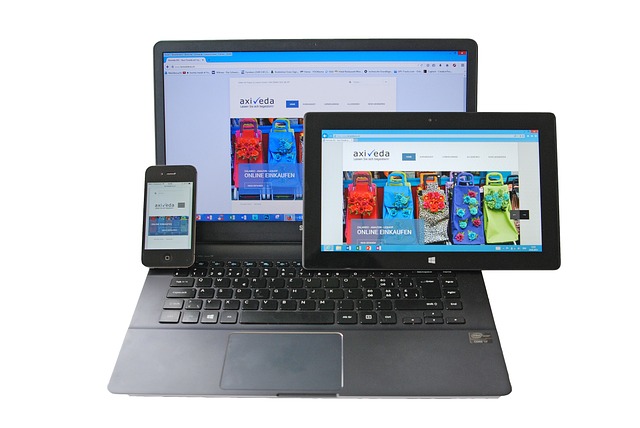To safely and effectively replace your iPad battery, start by ensuring your device is completely powered down and the battery is fully depleted. Purchase a genuine replacement battery from a reputable source that matches your specific iPad model to avoid compatibility issues. Follow the precise steps to install the new battery, ensuring it's correctly aligned in its tray, reconnect the battery connector securely, and fasten the back panel screws without overtightening. After installation, calibrate the battery by charging it fully and then allowing it to discharge until the device shuts off. Regularly update your iPad's software and use the Battery Health feature to monitor and maintain optimal performance. If you encounter issues post-replacement, troubleshoot by checking the battery connection, verifying the battery's installation, and using diagnostic tools for further inspection. Remember, this process should be undertaken with care to prevent errors that could compromise your device's safety or functionality.
When your iPad’s battery life starts diminishing, knowing how to effectively and safely replace it can be a game-changer. This comprehensive guide covers everything from assessing your device’s battery health to post-replacement care. Whether you’re looking to extend your iPad’s lifespan or simply fix a depleted battery, ‘Essential Tips for iPad Battery Replacement’ provides the insight and step-by-step instructions needed for a successful DIY repair. Learn the nuances of selecting a high-quality replacement battery, the pitfalls to avoid, and how to calibrate your device afterward for optimal performance. With these tips in hand, you can confidently replace your iPad battery and enhance your digital experience.
- Understanding Your iPad's Battery Health: When to Consider Replacing Your iPad Battery
- Preparing for iPad Battery Replacement: What You Need to Know Before You Start
- How to Safely Remove the Old Battery from Your iPad
- Step-by-Step Guide to Installing a New Battery in Your iPad
- Tips for Purchasing a High-Quality iPad Replacement Battery
- Common Mistakes to Avoid When Replacing Your iPad Battery
- Post-Replacement: Calibrating and Maintaining Your New iPad Battery
- Troubleshooting Common Issues After an iPad Battery Replacement
Understanding Your iPad's Battery Health: When to Consider Replacing Your iPad Battery

Monitoring your iPad’s battery performance is crucial for maintaining its longevity and functionality. To understand if it’s time to replace your iPad battery, you should regularly check the device’s battery health. Apple provides a feature in iOS that allows users to see detailed information about their iPad’s battery, including its maximum capacity. This can be accessed by going to Settings, tapping on Battery, and selecting ‘Battery Health.’ The tool will display the current battery level and compare it to what Apple considers as typical performance for a new battery. If your battery’s capacity is significantly lower than when you first purchased your iPad, or if it indicates that the battery health is substantially reduced, this may be an indication that replacing the battery would enhance your device’s performance and extend its lifespan.
When considering a replacement, it’s essential to weigh the benefits of a new battery against the cost and the condition of the rest of your iPad. If your iPad is otherwise in good working order and you rely on it for daily tasks or enjoy using it for entertainment, a battery replacement can be a worthwhile investment. Apple official stores and authorized service providers offer this service, ensuring that your device receives genuine parts and professional handling. Additionally, if your iPad is covered under Apple’s limited warranty, AppleCare+, or consumer law, battery replacement services may be provided at no additional charge. Always refer to the official guidelines or consult with a professional before proceeding with an iPad battery replacement to ensure that it aligns with your device’s specific needs and your usage patterns.
Preparing for iPad Battery Replacement: What You Need to Know Before You Start

Prior to embarking on an iPad battery replacement, it’s crucial to gather the necessary tools and information to ensure a smooth process. To begin with, verify your device model to ascertain the correct battery type and replacement part. Apple provides specific batteries for different iPad models, and using an incorrect battery can lead to incompatibility or compromise the device’s functionality. Additionally, ensure you have the appropriate screwdriver set, as iPads utilize Pentalobe and Phillips-head screws. These tools are essential for safely removing the casing and securing components during disassembly.
Furthermore, consult Apple’s official service documentation or reputable repair guides. These resources offer detailed instructions and diagrams that illustrate each step of the battery replacement process. It’s also advisable to back up your iPad using iCloud or iTunes before proceeding. This precaution safeguards your data in case the replacement process is interrupted, ensuring that you won’t lose any important information during the repair. Taking these preparatory steps will position you for a successful and efficient iPad battery replacement experience.
How to Safely Remove the Old Battery from Your iPad

When considering the replacement of your iPad’s battery, safety and precision are paramount. The process involves carefully handling components that are both delicate and potentially hazardous under improper conditions. Before attempting to replace the ipad battery, ensure you have the correct tools and a safe workspace. It’s crucial to discharge the device fully before starting, as even a partially charged battery can pose a risk of electrical current. Once the iPad is powered off and the charge is depleted, proceed with removing any screws securing the back panel. Carefully pry open the device, taking note of clips or latches that hold the battery in place. These must be released gently to avoid damaging the components or causing a short circuit, which can lead to overheating or other hazards.
Upon accessing the battery, look for any adhesive that holds it in position and carefully detach it. Do not use sharp tools that could puncture or cut the battery, as this can cause leakage of electrolyte fluid, which is both corrosive and dangerous. Once the adhesive is addressed, you can safely remove the old battery. It’s advisable to replace it with a new battery from a reputable supplier to ensure compatibility and safety. After removing the old battery, clean the area where it was positioned to prevent any debris or residue from causing issues with the new battery. Properly dispose of the old battery according to local regulations, as improper disposal can be environmentally damaging and unsafe. With the old battery gone, you can now install the new one, following the reverse procedure to ensure everything is securely in place for optimal performance and safety.
Step-by-Step Guide to Installing a New Battery in Your iPad

When your iPad’s battery performance degrades, replacing it can significantly enhance its functionality. To ensure a safe and efficient replacement process, follow these detailed steps. Begin by powering off your device and ensuring you have the correct tools at hand—a pentalobe screwdriver and a plastic opening tool are essential for this task. Carefully remove the back panel by prying around the edges, being mindful not to force the tool into any sensitive components. Once the back is removed, disconnect the battery connector, carefully lift the battery from its tray, and gently disconnect the battery from the device, taking note of the proper orientation for reassembly.
Next, insert the new battery into the tray with the positive side facing upwards, as indicated by the “+” marking. Reattach the battery connector, ensuring it clicks securely into place. Proceed to replace the back panel by aligning it with the frame and pressing gently until all edges are securely in position. Use the pentalobe screwdriver to reinsert the screws, tightening them to the manufacturer’s specifications without overtightening, as this can damage the screws or the casing. Finally, power on your iPad to verify that the new battery is functioning correctly. If all steps are completed accurately, your iPad should be restored to its optimal performance level with a brand-new battery. Remember, for safety and optimal performance, it’s recommended to replace an iPad battery only if you have experience with such tasks or consult a professional service provider.
Tips for Purchasing a High-Quality iPad Replacement Battery

When considering a replacement battery for your iPad, it’s crucial to prioritize quality to ensure optimal performance and longevity. The first tip for purchasing a high-quality iPad battery is to buy from reputable sources. Official Apple retailers or authorized third-party vendors are recommended as they offer batteries that have been rigorously tested and meet the necessary safety and performance standards. Additionally, these sellers typically provide warranties and support, which can be invaluable if any issues arise post-installation.
Another key factor to consider when replacing your iPad battery is the compatibility of the new battery with your device model. Ensure that the battery you select matches the exact model of your iPad, as different models may have varying capacities and connectors. This specificity can prevent potential damage to your device during replacement. Furthermore, checking the battery’s capacity before purchase is advisable; opt for batteries with a high-capacity rating to extend your iPad’s usage time between charges. Lastly, review customer feedback and ratings for any battery you are considering. These insights can help gauge the product’s reliability and performance in real-world conditions, ultimately guiding you towards a reliable replacement for your iPad battery.
Common Mistakes to Avoid When Replacing Your iPad Battery

When addressing the common mistakes associated with replacing an iPad battery, it’s crucial to approach the process methodically to avoid potential issues. One prevalent error is attempting to replace the battery without properly discharging the device first. Even if the iPad displays a low charge level, there may still be residual power in the old battery that can cause safety risks during replacement. Ensure the device powers down completely and discharge any remaining energy before proceeding.
Another frequent oversight is selecting an incompatible or low-quality battery. Not all batteries are designed for iPads; their specifications, including size, capacity, and chemistry, must match the original component exactly. Utilizing a battery that does not align with Apple’s specifications can lead to poor performance, overheating, or even device damage. To avoid these pitfalls, it’s advisable to source a genuine replacement battery from a reputable supplier or an authorized service center. This step is key when you aim to replace your iPad battery effectively and ensure its longevity and optimal performance.
Post-Replacement: Calibrating and Maintaining Your New iPad Battery

When you’ve successfully replaced your iPad battery, the next critical step is to calibrate it for optimal performance. Calibration ensures that your device accurately reports the battery charge level, which is crucial for the health and longevity of your new battery. To calibrate, start by charging your iPad to 100% and then let it discharge until it shuts down. Once it’s completely depleted, plug it back in and allow it to charge to 100% again without interrupting the process. This cycle helps the iPad recognize the new battery capacity. After calibration, regular maintenance is essential to maintain your iPad’s battery health. Regularly update your iPad’s software, as updates can include improvements to battery performance. Additionally, use your iPad daily and ensure it doesn’t fully discharge regularly, as this can strain the battery. Keeping an eye on the battery usage through the Battery Health feature in Settings will give you insights into how your battery performs over time. By following these steps post-replacement, you can extend the life of your new iPad battery and ensure that it functions efficiently for as long as possible. For those who have replaced their iPad battery themselves or are considering doing so, these measures are key to ensuring the longevity and reliability of your device’s power source.
Troubleshooting Common Issues After an iPad Battery Replacement

When you’ve replaced the iPad battery, it’s crucial to ensure that the device functions optimally. Common issues that may arise post-replacement include inconsistent power readings, poor battery life, or failure to power on. To troubleshoot these problems effectively, start by verifying that the replacement battery is properly seated in its compartment. Any misalignment can disrupt connectivity and lead to erroneous charging or discharging. If the device is not powering on, check the power button and connections to guarantee they are intact and functioning. Additionally, consult the iPad’s user manual for any specific post-replacement instructions, as different models may have distinct quirks or requirements during the initial charge period.
After ensuring the battery is installed correctly, calibrate the new battery by charging it to 100% and then letting it discharge to near 0%, without interrupting the process. This can help set the battery’s capacity accurately. If issues persist, use Apple’s official diagnostic tools or third-party applications designed for battery testing. These tools can provide insights into the battery’s health and charging patterns, aiding in identifying any anomalies that may indicate improper replacement or lingering hardware issues. Should these troubleshooting steps not resolve the problem, consider revisiting your installation process to double-check each step, as a carefully executed replacement is the foundation for a successful battery life experience on your iPad.
When your iPad’s battery starts to wane, knowing how to safely and effectively replace it can save you time and money. This article has provided a comprehensive guide on understanding your iPad’s battery health, the necessary preparations for replacement, and detailed steps to remove the old battery and install a new one. Additionally, we’ve covered critical tips for purchasing a high-quality replacement battery and how to maintain it post-replacement. Remember, replacing an iPad battery is a task that can be done with care and attention to detail. By avoiding common pitfalls outlined in this article, you can ensure your device operates at its best. For those who prefer professional assistance, it’s always advisable to consult a certified technician for service. With the right knowledge and resources, replacing an iPad battery need not be daunting. Keep these tips in mind, and your iPad will continue to serve as a reliable companion for all your digital needs.
